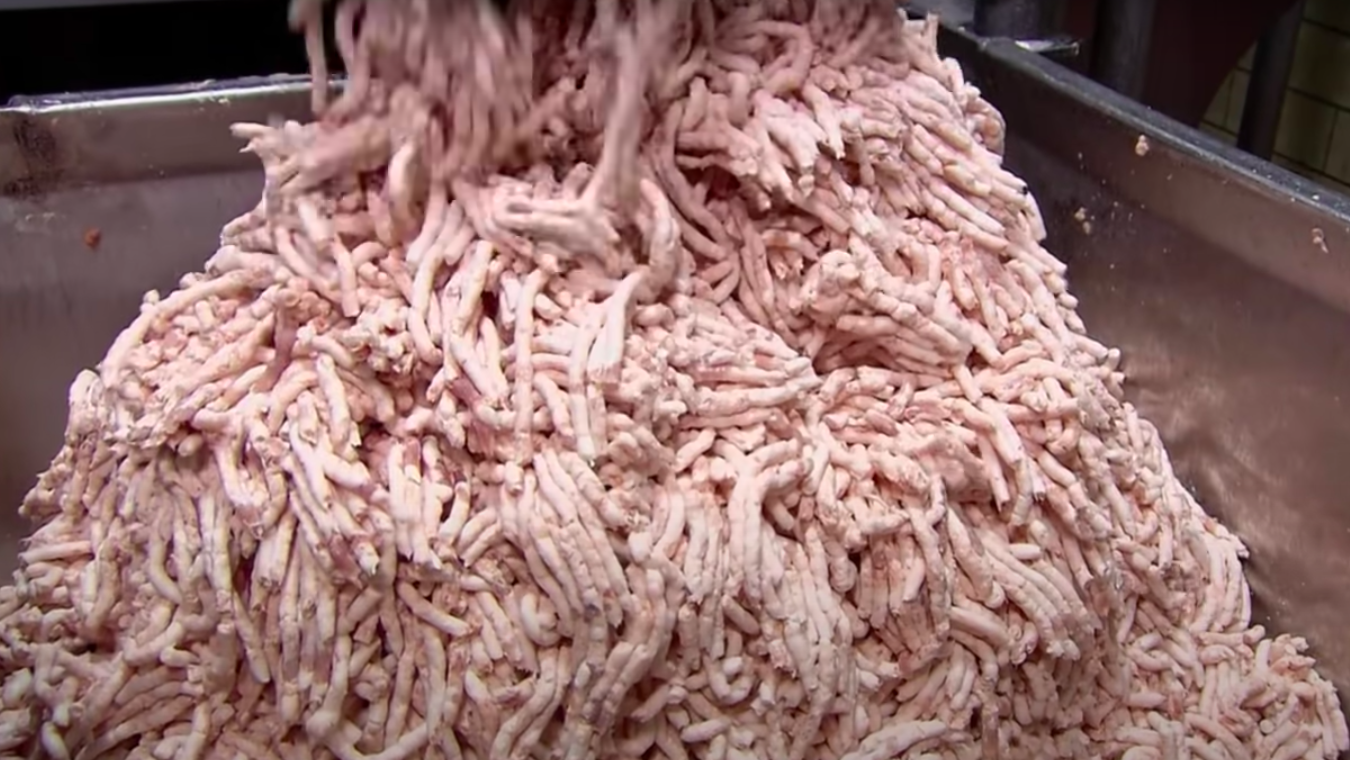You're Probably Still Eating Pink Slime
15,000 pounds of "pink slime" sloshed onto a Pennsylvania highway. So, yeah, we're still eating that stuff.
Christmas came early for Twitter clowns yesterday, when New York-based Eyewitness News tweeted a photo of 15,000 pounds of "hot dog filler" strewn across a Pennsylvania highway. The piggy-pink goo burst forth from a tractor-trailer after a truck crash, prompting the Very Online to claim that they're "never eating a hot dog again."
Tractor-trailer crash sends 15,000 pounds of hot dog filler onto Pennsylvania highway https://t.co/q3K2FUTKh3 pic.twitter.com/EhCHF7s1kA
— Eyewitness News (@ABC7NY) May 30, 2022
Friends, I've got bad news and I've got good news. The bad news: this type of meaty goo is pretty dang ubiquitous in the processed food market. The good news: you can avoid it if you know what to look for.
What is pink slime?
Every few years, pink slime oozes back into our collective consciousness. The substance's meme-ification began in 2012, when "undercover footage" sent McDonald's customers running for the hills. Per Takeout OG Kate Bernot, the leaked photo showed "pastel pink goo coiled sausage-like from a machine, allegedly destined for your fast-food burger." Shortly after, McDonald's pledged to stop using the stuff—but history repeats itself, and a whole new generation of fast food consumers seem to be learning about the pink mess that sneaks into their favorite beefy products.
So, what exactly is in the goo that crept Blob-like across that unfortunate Pennsylvania highway? Technically, it's beef. Per the International Food Information Council (IFIC), "pink slime" is a colloquial term for Lean Finely Textured Beef (LFTB). There are two types of LFTB: boneless lean beef trimmings (BLBT) and finely textured beef (FTB).
Both substances are derived from the fatty bits that slaughterhouse workers remove from prime cuts like steaks and roasts. As The New Food Economy outlines, those trimmings are then heated and passed through a centrifuge, skimming the fat from the meat. The fat is sold separately, leaving the funky beef bits behind. Et voila: pink slime.
(Quick hot dog note here: As you can see in this incredibly disgusting How It's Made video, most hot dogs contain a mixture of pork, beef, and chicken, meaning they're not exclusively filled with LFTB.)
Is pink slime safe to eat?
Probably, yeah. Although it's certainly gross to look at, it's not as nuclear as the memes would have you believe. Beef Products Inc., or BPI, is a major manufacturer of the stuff and has been steadily working to assure consumers of its safety—although, as with any major meat company, I'd take their claims with a grain of salt.
Here's the tricky part: If pink slime grosses you out, you're going to have a tough time avoiding it—especially if you regularly eat beef. That's because, as we reported in 2019, the USDA's Food Safety And Inspection Service reclassified all types of LFTB as "ground beef." That means that companies don't have to identify their beefy additives as LFTB. Check out a product label, and you'll most likely see the ingredient listed as plain ol' ground beef.
That said, if you'd rather avoid LFTB, your best bet is to purchase kosher products, which are guaranteed to contain high-quality cuts prepared under rabbinical supervision. You can also opt for meatless hot dog alternatives. And if you're intrigued by the idea of slurping down some pink slime, I'm sure there's still a bit of slime debris on that Pennsylvania highway. Get to licking.
